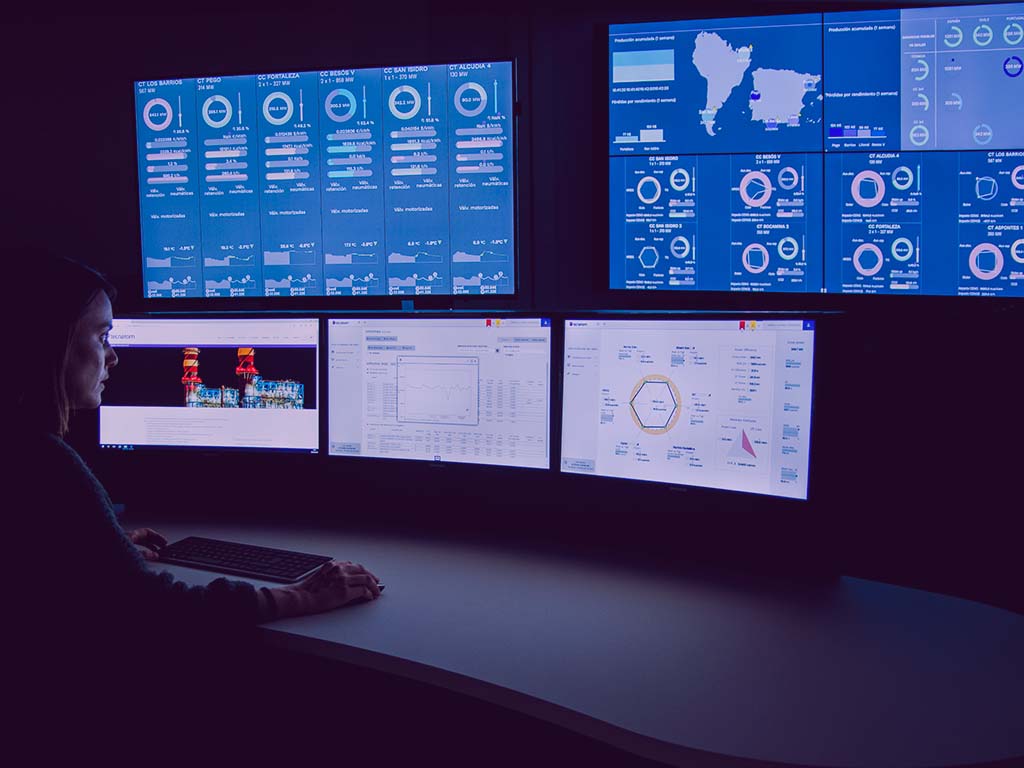What are Integrated control centers?
The solution traditionally used to operate geographically dispersed power plants is to have an independent control center located at the site of each facility. This solution has major limitations in terms of taking advantage of the synergies related to the operation of the different facilities.
An evolution of the traditional approach is the so-called Integrated Control Center, which is characterized by the integration of several operational responsibilities, both in terms of the functions it performs (control, monitoring, planning, support, etc.) and in terms of the number and technology of the facilities it operates.
In the field of renewable generation (wind, solar photovoltaic and hydro), since it is not necessary to have personnel on site 24×7, it is an increasingly widespread practice to have Integrated Control Centers that remotely monitor and/or control a large number of facilities of one or more technologies. However, there is still a long way to go in the development of Integrated Control Centers, in the power generation sector, to take advantage of operational, administrative and organizational synergies.
Developing an Intgrated control centers
The development of a Control Center for Remote Integrated Operation requires technological challenges since it must have a Control Room (whose design responds to the specific needs of the generation mix), equipped with a platform that integrates the Supervision, Control and Process and Operations Management systems, together with a solid communications infrastructure that ensures high availability and reliability. However, given the maturity of the technologies available in the market, the challenge of rethinking the operations management model is even greater, adapting the organizational structure, reviewing and incorporating new processes and training personnel in order to:
- Strengthen communication, support and coordination of field teams (located in different sites and far from the integrated control center).
- Ensure high performance and operational efficiency by taking advantage of the synergies generated by managing the operations of a fleet of generation units from a single control center.
- Maintain a high standard in the safety of people and facilities.
Why Tecnatom?
To address the development of a new Integrated Control Center (whatever the starting situation) or optimize an existing one, it is necessary to define the functional and operational requirements of the same, as well as, after performing the corresponding analysis, to design the organizational structure (indicating the functions of each of the roles) that allows to respond to the aforementioned requirements. Only at this point will it be possible to provide the new organization with the control room, the processes and the personnel training required to meet its specific needs.
Tecnatom has wide experience in the development and execution of all the stages involved in a project for the development of a new Integrated Control Center, as well as in the adaptation of an existing one, using methodologies supported by the applicable standards and applying the best international practices in the electricity generation sector.
Tecnatom has wide experience in the development and execution of all the stages involved in a project for the development of a new Integrated Control Center, as well as in the adaptation of an existing one, using methodologies supported by the applicable standards and applying the best international practices in the electricity generation sector.
Benefits associated whit Integrated Control Centers
Although the benefits obtained by implementing remote operation from an Integrated Control Center are multiple, they all have in common that they translate into improved efficiency in operations, and therefore an increase in the EBTIDA of the facilities, by taking advantage of the high number of existing synergies by centralizing different operational responsibilities in a single Control Center.
Logically, this increase in the EBITDA of the facilities will be strongly conditioned by the initial situation of the fleet, which represents the starting point for identifying the corresponding Improvement Opportunities, as well as for the subsequent development of the Implementation Plan of the different projects to be executed.







